Research
Tatooines Worlds
Like Tatooine in the Star Wars, a planet orbiting around a pair of stars is so mysterious and complex. One thing to be noted is that the planets in binary stars I am studying are different from the Tatooine. Instead of orbiting both stars, the planets of my interest are orbiting only one component of the binary stars. In such configuration, planet formation is expected to have several difficulties. These difficulties are caused by a companion star in the same system. The companion star could truncate the protoplanetary disk where planets form. While it could also perturb the materials in the disk such that destructive collision outnumbers constructive collision. Even after planets form, the companion star could potentially eject some of the planets. Against all odds, planets do form in binary stars. Till Aug 2017, human have discovered around 60 such system in universe.
Some explorations have found the rate of planet formation depend on the separation of stellar companion. For instance, 10 times the distance between the Earth and the Sun, the odds of forming a planet is only 20% compared to a single star case. However, if the separation is more than 1500 AU, i.e., 10 times the distance of Voyager 1, planet formation is barely influenced by the companion star. (Wang et al. 2014&2015)
After selecting out four K2 candidates with known stellar companion from our physical binary systems in Washington Double Star (WDS) catalog, we conducted validtion process for these four sources. We combine ground-based seeing-limited survey data, photometry results and adaptive optics imaging with a transit analysis pipeline to validate one candidate as planet and identify one candidate as likely false positive. The host, EPIC 201920032, a bright (K=11.364) G2V star hosting a 2.39907 RE planet with a period of 28 days orbited by a faint star in a distance of >6752 AU. We use Monte Carlo to get planet parameters with giving stellar properties and VESPA to calculate each candidates false positive probability and statistically and photometrically validate transiting exoplanet.
I can't help ask such questions: How different are the rocky planets in binary system from these giant or neptune-size planets we've detected? Is there any unknown physics between s-type and p-type binary planetary system in their initial phase? How can we observe them? I am on the new way to attack these questions!
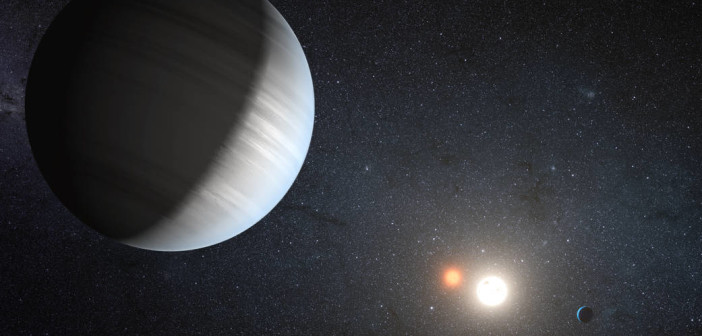
NASA Ames/JPL-Caltech/T. Pyle
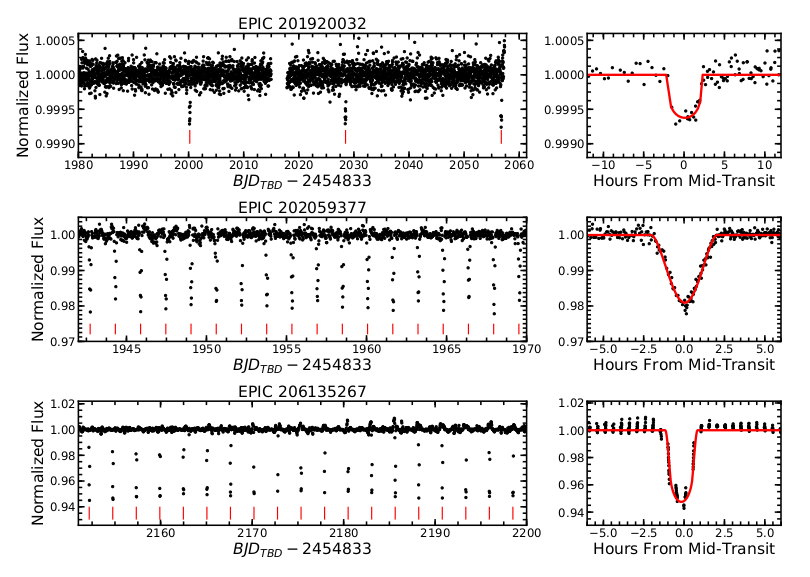
processing results and fitting light curves with transit model for three planet candidates.
Dusty Donut Around Black Hole
Dusty torus in active galactic neclei is a cold gas and dust structure required by the unification model of AGN. This torus is capable of absorbing a large amount of the light emitted from the AGN. But the radiation which is emitted perpendicular to the plane of the torus will easily escape. Now, the relative angle between the plane of this torus and the line-of-sight to Earth will be completely random for different AGN. Thus, in some AGN (relative angle is closer to zero degrees),called type-1 AGN, this light will be absorbed and the AGN would appear as obscured, while in others (relative angle is closer to 90 degrees) defined as type-2 AGN, we would see the primary AGN light and classify it as an unobscure AGN. Since we see the black hole 'directly' in unobscured AGN, these are typically brighter than their obscured counterparts. Even though this may be an over-simplification, this dusty torus can thus 'unify' observations of different AGN classifications. The central engine is similar in all AGN, and many observed differences can be naturally explained as due to differences in observing view-points.
Covering factor is a very import geometrical parameter for this structure for confirming the completeness of unification models. A lot of efforts are devoted to calculate this key parameters. One method is CF can be deduced from he number ratios of obscured to unobscured AGNs in the local universe. For nearby Seyfert galaxies and radio galaxies (Lu et al. 2010) reported a Type 2 to Type 1 ratio around 2:1 to 3:1. This suggests that an average opening angle of the dust torus is about 45 degree. Another method utilize amounts of data of infrared photometry to take the ratio of mid-infrared luminosity to bolometric luminosity as the indicator of CF.
Both methods ignore the lack of weak source with dust re-emission. This will bias against those are faint in mid-infraredmid Therefore, it had been a challenge for us till we took a creative solution in which we used a “stacking” source of those with similar physical parameters to acquire a comprehensive survey with considerable SNR. We explored around 44000 sources with bluer spectral index in in redshift range between 0.3 to 3.4. We successfully constrained the Lbol-CF with more considerable sample with reduced selecting effect.Also, we found no clear evolution of covering factor in this redshift range.
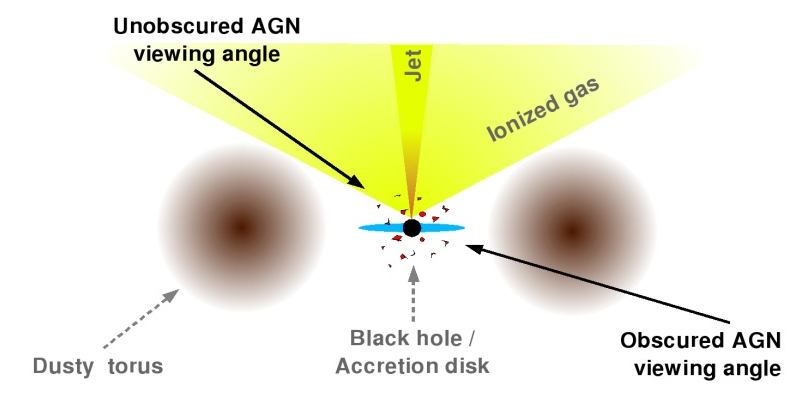
UK Southampton/ESO/Poshak Gandhi
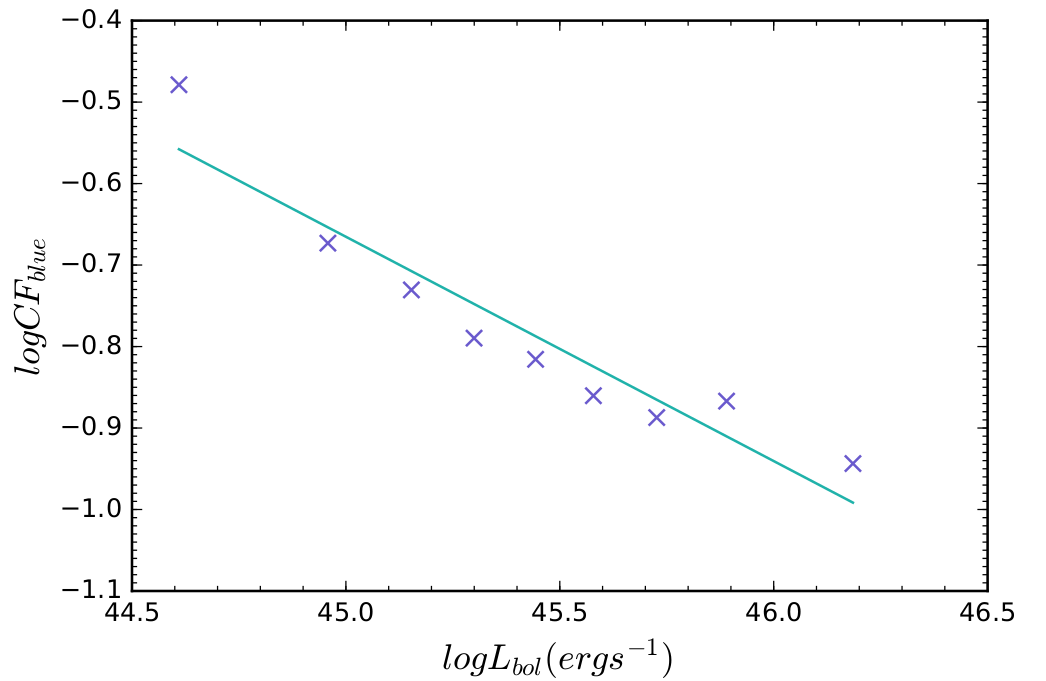
Left panel is the relationship between bolometric luminosity and covering factor; right panel displays no evolution of covering factor and redshift.
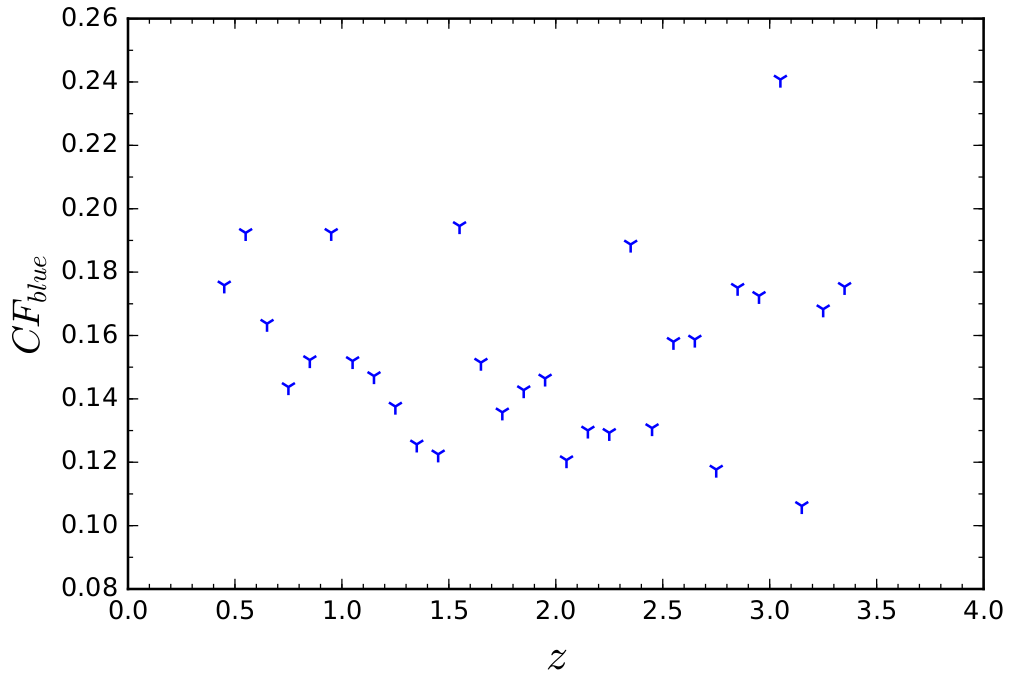
Snapshots for Planetary Systems
Directing snapshot for the exoplanets is very difficult in most situation. Being small and dim planets are easy lost in the bright ray of host stellar. The first direct images of planets or other interesting localized structures orbiting nearby stars were obtained relatively recently. (Marois et al. 2008a) Even with star light suppression systems, procuring high contrast perfomances needs advanced post-processing method.
For very aggressive PSF, present algorithms have their shortage and need to be calibrate. Some methods of image processing proposed in recent years include the PCA method proposed by Sommer et al. 2012 based on Karhunen-Love transformation (Karhunen 1947 & Loėve 1948); Marois et al. 2006 proposed an image rotation differential (ADI); Crepp et al.2011 proposed the high-pass filter method and local image weighted overlay(LOCI) method and so on.
We recover these methods in our report and do more exploration about erosion and expansion algorithm to tackle this issue. Besides, we conducted experiment about forward modeling in Jean-Baptiste Ruffio et al. 2017. Our research report is here
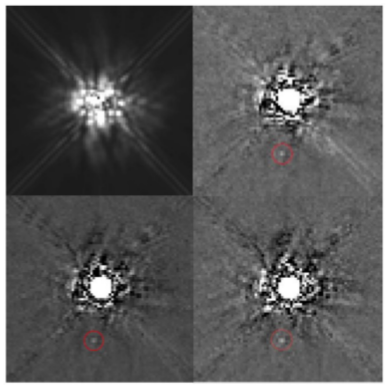
(a) HR8799 HST-NICMOS raw image; (b)(c)(d) HR8799 after K-L algorithm, corresponding to the number of principal components using K =30/50/90 results, respectively.
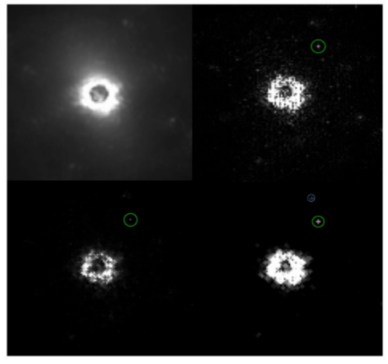
(a) GPI original image; (b) image after secondary Fourier high-pass filtering; (c)image with erosion operation after filtering; (d) image with open operation after filtering.